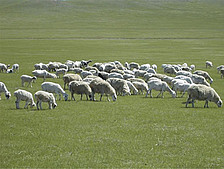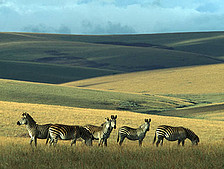GrassNet DAAD - Background
Natural grasslands are the world’s largest multifunctional terrestrial ecosystems covering more than 30% of the global land surface. Grasslands exist on all continents across different agro-ecological zones, throughout the tropics (e.g. Savanna) and the temperate zones (e.g. Steppe). Grassland ecosystems are usually arid to semi-arid, characterized by permanent or at least seasonal water limitations.
Observations and scenario calculations (IPCC) for these climatic zones predict increased variability of precipitation resulting in a higher number of extreme weather events and prolonged drought periods. The pressure on natural grasslands is constantly increasing through population growth and associated encroachment of agriculture and increasing demand for food and raw materials. To this adds the recent expansion of bio-fuel farming.
Thus, natural grasslands are increasingly seen as hot spots of contrasting socio-economic interests. Grasslands are particularly vulnerable to land use changes and the aforementioned climate change further affects their resilience. Grasslands are widely used and often managed by pastoral livestock keepers to gain their livelihoods. Pastoral systems are natural resource management systems, which support 100-200 million pastoral people worldwide and - beyond the immediate pastoral livelihoods - provide a wide range of services and products of national and global value (e.g. biodiversity, C-sequestration, wildlife and tourism, raw materials).
Grassland systems across different continents face a multitude of common problems; however, site specific or regional components such as e.g. the respective ecosystem's
grazing history are also important and, thus, require system-specific approaches. The grassland systems under study on the different continents have similarities and also differences with regard to factors that determine their management and use.
To date, little is known about the parallelism or divergence of grasslands’ vulnerability, the relative importance of individual factors, the strategies used by pastoralists to buffer variability, and the comparative advantage of different scientific approaches in a cross continental comparison. One of the reasons for this is the lack of networks - both educational as well as scientific - addressing these important systems.



